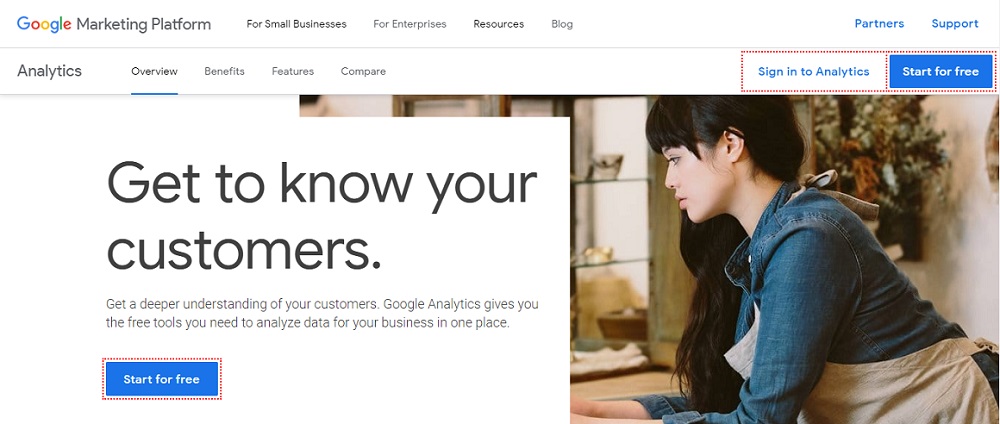Google not only helps consumers to find the information, and connect with business or service providers but also helps the latter with Google Analytics to know how their online marketing strategy is working, and how relevant their information, product or service is to the former.
Google Analytics – this digital marketing blog discusses how to use this one of the most promising and comprehensive SEO(Search Engine Optimisation) and PPC(Pay-Per-Click) digital marketing tools.
Tell Google Analytics About Your Site/App
- Set up your Google Analytics Account visiting http://www.google.com/analytics/
- Create an account, click Start for free.
- Add your website or app in your Analytics Account.
- Add analytics code on your website
- Create a new view for an existing property in your account.
- Configure your account, properties, and views to determine access to your data and which data is available.

Know Your Website/App Performance
- How many users visited the site and how many sessions were created?
- What was the revenue, and conversion rate?
- How do you acquire users?
- How are your active users trending over time?
- How well do you retain users?
- When do your users visit?
- Where are your users?
- What are your top devices?
- What pages do your users visit?
- How are you performing against goals?
- What are your top-selling products?
Its dashboard (Google Analytics Home) has answers to all the above and many more queries that you might have as a business owner or digital marketer. The home page reveals the website or app performance with engaging graphical illustration, which you can easily understand.
Visit the Reports section on the Left Side on the desktop view, on Analytics App, click on Menu, and select the desired option from the drop-down. Take a look at the top metrics that appear.
Audience
Demographics (Language, Country, City), Technology Used or System (Browser, Operating System, Service Provider), Mobile Device Used (Operating System, Service Provider, Screen Resolution), Interest (Food, Beauty, Travel, Shopping, etc.) – when you know about your users well, you can accordingly create the right website or app that delivers the best user experience and customize your offerings.
Customer Acquisition
Direct, paid Search, organic search, social, referral, display, Other- Know which channels are working for your website or app. Put extra efforts where you are lagging behind. For any website owners, getting direct and organic traffic is of paramount importance. However, it can’t be achieved overnight. Work consistently on branding and SEO. Take the help of an SEO agency. or hire an SEO consultant to set your foot right.
If you are running Adwords(Now called as “Google Ads”) Campaign, click “Google Ads” to know about the acquisition, and conversion through paid. You can derive insights regarding search queries, engagement by the hour of the day, and final URLs to sharpen your reach, optimize the campaign, reduce your CTR (Click-through rate), and get more conversions.
Behavior
Knowing the content consumption behavior helps you optimize your website or app and create the write content marketing sales funnel. You can read the journey of users from entry to exit, and optimize your Internet marketing strategy. It also helps you to setup Content Experiments (CX) applying different content marketing funnels, and monitor what works and what doesn’t.
Conversion
After all the SEO and paid efforts, you must be interested in knowing that how fruitful was your investment.
If you haven’t set up your goals, create them as follows:
- Go to your Google Analytics standard reports.
- Click on the “Admin” button in the top right.
- Click on “Goals”
- From one of the Goal sets, click “+ Goal” (goal sets are just a way for you to easily group goals) to set up a new goal.
In addition to conversions, Google Analytics reveals the obstacles and barriers that you can remove to make the user’s journey or experience better. Track goal path and reverse goal path. Involve your web developer to improve the user’s experience.
Recently Google Introduced “Search in Google Analytics 4 properties” – Discover What’s New with Google Analytics
